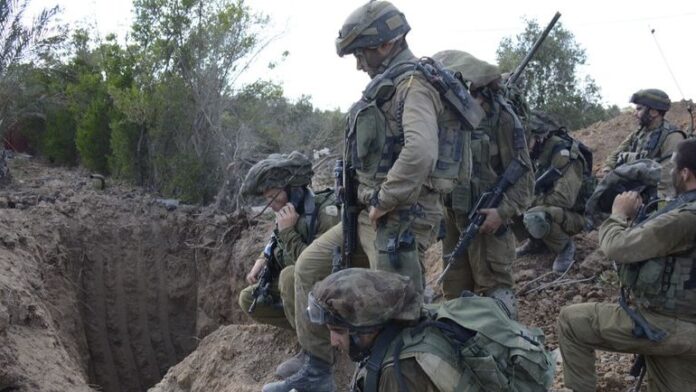Author: Eyal Weizman
Affiliation: Forensic Architecture
Organization/Publisher: London Review of Books
Date/Place: December 16, 2021/UK
Type of Literature: Analysis
Word Count: 3395
Link: https://www.lrb.co.uk/the-paper/v43/n24/eyal-weizman/tunnel-vision
Keywords: Apartheid, South Africa, and Israel
Brief:
Postmodern theory informs Israeli Defense Forces (IDF) strategies and influences its urban operations tactics in Gaza. The proximities between Israel’s academic and military spheres enable the IDF to employ “tactics inspired by the radical theoretical left to make their way into the arsenal of a colonialist project of the extreme right” in urban warfare in Gaza. These theoretically informed tactics often resemble ancient and medieval wars of blockades and sieges. The vital checkpoints and extensive systems of walls make Israel similar to the 12th and 13th-centuries over-militarized Crusader states that dominated today’s Lebanon and Israel with more than 160 Frankish castles and citadels. Guided by these theoretical tenets, the apartheid state of Israel has sealed off Gaza completely by fences on land and the navy at sea. This, however, didn’t terminate Palestinian resistance; instead, it has radically transformed the battle of conflict from being conducted on the surface of the earth into underground fighting. Israeli bombardment operations in Gaza in 2008/9, 2012, 2014, and 2021 have pushed Palestinians to achieve their resistance through an extended and fortified underground tunnels system. Palestinians excavated their first tunnels in Gaza in 1982 to link parts of the city of Rafah after it was divided as part of Israel’s withdrawal from Sinai and its peace treaty with Egypt. After a decade with the initiation of the Oslo accord, Israel began isolating Gaza, which continued throughout the years of the Second Intifada (2000 and 2005). In 2007, after Hamas was elected to power, the Gaza strip was completely blockaded. Since then, goods including foods, medicine, and weapons from Egypt entered the strip only through the tunnel systems.
Moreover, the tunnels enabled Palestinians to blow up Israeli Military bases in 2004, and kidnap the Israeli soldier, Gilad Shalit, who was taken to Gaza in 2006; the deal to release him resulted in over a thousand Palestinian prisoners being released in 2011. The Egyptian military demolished the tunnel systems from Gaza to Egypt under self-declared president Abdel Fattah el-Sisi, who grabbed power by a military coup in 2013 and instantly joined Israel’s blockade. Since then, tunneling was redirected to the frontiers with Israel. In 2014, groups of Palestinian fighters traversed the border and attacked a military base on the Israeli side of the fence. Soon after, the IDF’s invasions of Gaza and bombardments in cities were justified by the need to neutralize underground tunnels which passed under urban settlements and buildings. However, the geology of Gaza—with relatively easy-to-dig dry sandstones—has favored the tunnellers to create long and complex networks of tunnels and caused heavy casualties to the IDF. Although the deaths of thousands of Palestinians and the destruction of lots of buildings in the strip have been mainly from the airstrikes, controlling what lays underground has enabled Palestinians to manage continuous resistances, the existence of which is a victory by itself. Internationally defined as an ‘occupied territory, the Gaza strip “appears to be a liberal Zone” under its surface. The Israeli army has learned and adopted the enemies’ methods and is mimicking to suppress the resistance through theory. Despite its complete upper hands at local, regional, and global levels, the Zionist state “still imagines itself to be fighting a guerrilla war against more powerful enemies and existential threats.”
By: Jemal Muhamed, CIGA Senior Research Associate




